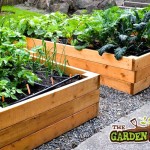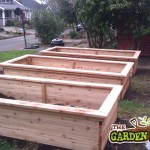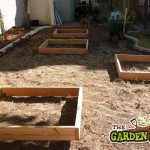Vegetable growing is very easy when you use raised beds because you can tailor your site & growing conditions to suit your choice of vegetables & your eating habits.
- Raised beds
- Tall Raised Beds
- Positioning Raised Beds
Raised Beds – Where to Position
But before you choose the best site for your raised beds, there are a few things that you should consider.
Light: Growing plants need access to light to ensure steady growth. Light is essential for photosynthesis and photosynthesis is how plants make their food (Glucose). The faster a plant can produce food for itself the faster a vegetable crop can produce food for you.
Soil: Because you have chosen to use raised beds then site selection in terms of soil quantity is less important. But, beds shouldn’t be placed on hard surfaces where no drainage is possible. For all vegetable production your soil needs to be free draining. For the most part, vegetables prefer a light airy soil, crops such as salads, carrots & other root crops prefer light soils. These soils warm up quicker, dry out quicker, are easy to weed, easy to work and allow for better root penetration. Other crops such as brassicas prefer heavy soils.
Frost pockets: It is essential to avoid frost pockets. Seeds are generally sown from mid March onwards and it is around this time that frosts are still present. Any young plants will die off if out in the frost in March. Therefore raised beds should not be placed in frost pockets. Avoid north facing corners and avoid areas where cold cannot escape.
Shelter: Taller crops & tender crops will need shelter from windy conditions. Shelter can by built so this should not limit where you position your raised beds but avoid open sites & shelter from coastal winds. You can use garden screening or wind block to protect crops & beds
Once you are happy with your chosen site you can position your beds. Raised beds should be no more than 1m wide and should have sufficient space to allow you walk between them to tend to your crops. The height of the beds should be at least 15cm with 50cm being the ideal height for working beds, pest control & maintaining good soil drainage.
You can further enhance the growing conditions of your beds & extend the growing season by positioning protective covers over your beds.
Also, by positioning the beds close to your home you can increase temperatures by 1 or 2 degrees which can make all the difference. Similarly, you can position your beds against a south facing wall which will be a sun trap in the Summer months.


